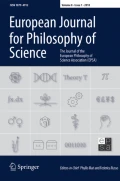Publicacions
“De Lobos, madres y jefes. Convenciones narrativas, discurso de género y divulgación de historia natural”
Un capítol de llibre del Dr. Carlos Tabernero, director de l'iHC i professor de la UAB.
RESUM
Al llarg de les darreres dècades, les qüestions relacionades amb l’ètica animal i la representació (audio)visual dels animals no humans han consolidat els discursos culturals occidentals que exploren el significat de categories identitàries com a marcs experiencials. Lluny de tractar-se de pràctiques discriminatòries disperses, l’especisme i el sexisme representen formes paral·leles de dominació que responen a un relat sustentat per tradicions i convencions que perpetuen l’abús i l’explotació. Davant l’interès crític creixent pel gènere documental com a format de qüestionament i/o reafirmació de relats normatius, el present volum recull una sèrie d’estudis amb un denominador comú: la interseccionalitat entre els constructes de gènere, sexualitat i animals no humans en una mostra de documentals animalistes i de natura i vida salvatge. Al llarg dels set capítols que el componen, les/els/les autores/r/s rastregen els paràmetres narratius, les tècniques cinematogràfiques i els elements retòrics de persuasió emprats pel documental en la seva exploració de noves lectures sobre la vida, cosificació i mort dels animals no humans en un món innegablement antropocèntric i androcèntric.
Per citar aquest capítol de llibre:Tabernero, Carlos (2025). “De Lobos, madres y jefes. Convenciones narrativas, discurso de género y divulgación de historia natural”. En Alonso Recarte, Claudia (ed.) Género y sexualidad en el documental animalista y de naturaleza. Valencia: Tirant Lo Blanch, pp. 181-200.
Publicat per Editorial Tirant Lo Blanch, Col·lecció Plural; ISBN paper: 9788410811188, ISBN electrònic: 9788410811195.
"Networks of queer reproduction in Sappho magazine (1972-1981)"
Nou article de la Dra. Rebecca Close (Becària postdoctoral Marie S. Curie -programa Dorothy-, visitant a l'iHC) al volum 34-1, de Journal of Gender Studies.
L'article ha estat publicat a Taylor&Francis online en accés obert, que es pot llegir aquí.
Urban Narratives about Nature. Socio-Ecological Imaginaries between Science and Entertainment
Llibre del Dr. Carlos Tabernero (professor de la UAB i director de l'iHC) com a editor, a Lexington Books.

RESUM
When more than half of the Earth population lives in cities, and living conditions worldwide suffer from a steady increase in environmental issues, historical inquiry provides useful reflections and new perspectives on the present. Urban Narratives about Nature: Socio-Ecological Imaginaries between Science and Entertainment aims at generating specific historical knowledge concerning processes of production, circulation, and management of natural history narratives and the associated struggles for meaning within the socio-ecological relations involved. The city is a powerful storyteller, and this book, upon a relational perspective, provides a diverse and interrelated collection of case studies of urban-based production and circulation of narratives about nature. Altogether, these cases probe the complex relationships among scientific authority, public awareness, policymaking, corporate and political interests, and environmental advocacy, in effect expanding the interdisciplinary linking of urban and environmental history within a global history view.
CONTINGUT
Acknowledgments
Introduction: Narrating Nature from the City
Part I: Between Academia and Activism
Chapter 1: Miquel Crusafont and Sabadell: Narratives about Paleontology (Spain, 1950‒1973)
Chapter 2: Environmentalism in Transition
Part II: Between Knowledge and Entertainment
Chapter 3: Wild at Heart: Zoological Gardens and the Urban Space
Chapter 4: Mass Media and Urban Animals in History: The View from Interwar Britain
Chapter 5: Teaching and Tinkering with Personal Computers in Catalan Rural Schools and Summer Camps (Spain, 1980s‒1990s)
Part III: Between Film and Literature
Chapter 6: The Countryside in the Frame: Film Representations of Nature under Franco’s Dictatorship
Chapter 7: Hunting Narratives in Twentieth-Century Spain: The Case of Miquel Delibes
Chapter 8: From El Modena to Terminator: Imagining Green Utopian Places for the Anthropocene
Part IV: Between Natural History and Television
Chapter 9: Percy Smith: The Triple Liminality of an Urban Natural History Filmmaker in Interwar Britain
Chapter 10: The Granada TV and Film Unit at the London Zoo: “Creating Adequate Opportunity for Observing Patterns for Amateur and Professional Zoologists Alike”
Chapter 11: Televising Nature as Modernization: El Hombre y la Tierra (Man and the Earth, 1974‒1981) in 1970s Spain
Afterword: City of Silence, City of Stories: Or of Ghosts, Doors, and Subversion
About the Contributors
ISBN: 978-1-66695-060-1 (paper) | 978-1-66695-061-8 (ebook)
'Liquid assets': Coastal wetlands, regional parks, and the protection of Mediterranean deltas
Article del Dr. Santiago Gorostiza (investigador postdoctoral CLIMASAT a l'iHC) al volum 3 (4), de Coastal Studies & Society.
L'article ha estat publicat online en accés obert i es pot llegir aquí.

RESUM
After a century of accelerating drainage, in the 1960s coastal wetlands became the object of unprecedented protection campaigns around the world. This paper compares the history of three successful cases of coastal wetland protection in the Mediterranean between the 1960s and 1980s: the Rhône (France), Po (Italy), and Ebro (Spain) River deltas. As most of the coast of Mediterranean Europe, these three cases were at the centre of renewed redevelopment attempts, to further expand intensive agriculture, industry, and seaside tourism, which invariably involved wetlands drainage. In these three cases, protection was achieved by establishing “regional parks” in the deltas. We argue that it was not by chance. Wetland advocates at the international, national, and local scales coated their plea for protection in the language of economics, making the case for wetlands’ value as “liquid assets.” They argued that wetland protection could rhyme with development and, abandoning initial projects to protect deltas as national parks, focused their efforts on creating regional parks instead. Stemming from the European regional planning movement, the regional park framework proved expedient to combine development expectations and wetland protection. Thanks to modular land use zoning, it promised to combine productive activities with protected areas, without imposing uniform restrictions on the entire deltas such as those often associated with national parks. The history of these three coastal parks, therefore, sheds light on the counterintuitive but strong relationship existing between coastal development and protection by uncovering the discursive strategies and unlikely coalitions that made conservation possible.
Si voleu citar aquest article:
Gorostiza, S., Parrinello, G., & Aguettaz-Vilchez, D. (2024). “Liquid assets”: Coastal wetlands, regional parks, and the protection of Mediterranean deltas. Coastal Studies & Society, 3(4), 181-202. https://doi.org/10.1177/26349817241282720
"The Collective Responsibilities of Science: Toward a Normative Framework"
Article del Dr. Vincenzo Politi (Becari postdoctoral Beatriu de Pinós de l'iHC) al volum 91, de Philosophy of Science.
L'article ha estat publicat a Cambridge University Press en accés obert, que es pot llegir aquí.

"Kuhnian Lessons for the Social Epistemology of Science"
Article del Dr. Vincenzo Politi (Becari postdoctoral Beatriu de Pinós de l'iHC) al volum 345 de Boston Studies in the Philosophy and History of Science, p. 31-49.
L'article ha estat publicat a Springer Link.

Resum
Kuhn’s analysis of the structure and function of the scientific community has been recently re-interpreted as a seminal contribution to the so-called social epistemology of science. Kuhn’s social epistemology should be considered as part of a normative-descriptive philosophical framework in which epistemological, historical, sociological, and psychological elements are interconnected. In this chapter, I will compare Kuhn’s seminal insights with two contemporary approaches to the social epistemology of science, namely: the development of idealised formal models of the scientific community and the use of qualitative studies for philosophical purposes. On the one hand, these contemporary approaches to social epistemology may be regarded as developing some of Kuhn’s views in new and exciting ways. On the other hand, however, it is still not entirely clear which kind of general philosophical ‘image of science’ they are contributing to. This chapter, therefore, aims at illuminating how analysing some of the contemporary debates in social epistemology through the lenses of Kuhn’s philosophy may recast under a new light the issue of the value of the study of the social dimension of scientific research for general philosophy of science.
Si el voleu citar:
Politi, V. (2024). Kuhnian Lessons for the Social Epistemology of Science. In: Shan, Y. (eds) Rethinking Thomas Kuhn’s Legacy. Boston Studies in the Philosophy and History of Science, vol 345. Springer, Cham. https://doi.org/10.1007/978-3-031-64229-6_3
DOI: https://doi.org/10.1007/978-3-031-64229-6_3
Resistance: A Journal of Radical Environmental Humanities
- Volume 11, Number 1, Winter 2023, From Resilience to Resistance: An Almost New Journal for Environmental Humanities.
Editor-in-chief: Dr. Marco Armiero

Resistance: A Journal of Radical Environmental Humanities, From Resilience to Resistance: An Almost New Journal for Environmental Humanities, Volume 11, Number 1, Winter 2023, we can find several articles of iHC members in a collective editorial:
-From Resilience to Resistance: An Almost New Journal for Environmental Humanities
Marco Armiero, pp. 1-4, DOI: https://doi.org/10.1353/res.2023.a931662
-The Dark Side of the White Alps: Guerrilla Narratives in the Marble Landscape of Tuscany
Chiara Braucher, Marco Armiero, pp. 105-123, DOI: https://doi.org/10.1353/res.2023.a931668
-Living a Lie: Leave the World Behind by Sam Esmail (review)
Carlos Tabernero, pp. 158-163, DOI: https://doi.org/10.1353/res.2023.a931670
Resilience: A Journal of Environmental Humanities is entering a new phase in its evolution. Under the leadership of the new editor-in-chief, Marco Armiero, the journal is undergoing a significant transformation and will now be known as Resistance: A Journal of Radical Environmental Humanities. This change in title is designed to provide clarity about the journal’s intellectual direction in its new series. While ‘resilience’ pertains to the ability to endure stressors and return to a prior state, ‘resistance’ is about taking action to challenge and change the conditions that lead to crises. As activists emphasized during the COVID-19 pandemic, the goal should not be a return to ‘normality,’ as ‘normality’ itself was part of the problem (Nebraska Press Journals, University of Nebraska).
ISSN: 2996-4849
"The Fertility Fix: the Boom in Facial-matching Algorithms for Donor Selection in Assisted Reproduction in Spain"
Article de la Dra. Rebecca Close (Becària postdoctoral MSCA Dorothy, actualment fent estada de recerca a l'iHC) al volum 30, de The New Bioethics.
L'article ha estat publicat a Taylor & Francis online en accés obert, que es pot llegir aquí.
RESUM
This article reads the uptake of facial-matching algorithms by fertility clinics in Spain through the lens of ‘the fertility fix’: a software fix to the social reconfiguration of kinship and a fixed capital investment made by competing fertility companies and firms. ‘The fertility fix’ is proposed as a critical, ethical lens through which to situate algorithmic facial-matching in assisted reproduction in the context of the racial politics of the face and phenotype and the spatial politics of market expansion. While an ‘infertility crisis’ is often mentioned when explaining the growth of the assisted reproductive technologies (ARTs) industry, the use of donated reproductive cells is tied up in societal, ecological and economic shifts. Combining Software Studies analysis with Marxist Feminist and trans*feminist perspectives on shifting re/production dynamics, the article details the role of computational technologies in promoting certain ideas and beliefs about family and fixing certain territories of capital flow.
Si voleu citar aquest article:
Close, R. (2024). The Fertility Fix: the Boom in Facial-matching Algorithms for Donor Selection in Assisted Reproduction in Spain. The New Bioethics, 1–17. https://doi.org/10.1080/20502877.2024.2371738
"The value-free ideal, the autonomy thesis, and cognitive diversity"
Nou article del Dr. Vincenzo Politi (Becari postdoctoral Beatriu de Pinós de l'iHC) al volum 204, de Synthese.
L'article ha estat publicat a Springer Link en accés obert, que es pot llegir aquí.
RESUM
Some debates about the role of non-epistemic values in science discuss the so-called Value-Free Ideal together with the autonomy thesis, to the point that they may be assumed to be intertwined. As I will argue in this article, the two are independent from one another, are supported by different arguments, and ought to be disentangled. I will also show that the arguments against value-freedom and supporting a value-laden conception of science, are different from the arguments against autonomy, which support democratized science. Moreover, while some of the arguments against autonomy and for democratized science may actually be consistent with value-freedom, they conflict with some philosophical views about the internal diversity of well-designed epistemic communities. This article distinguishes the Value-Free Ideal and the autonomy thesis, as well as their antitheses, and investigates their relations to some of the socio-epistemological models of the social organization of scientific research. Its aim is to make explicit some incompatibilities between different normative frameworks developed in philosophy of science.
Si el voleu citar:
Politi, V. “The value-free ideal, the autonomy thesis, and cognitive diversity”. Synthese 204, 24 (2024). https://doi.org/10.1007/s11229-024-04673-1
DOI: https://doi.org/10.1007/s11229-024-04673-1
Article de Marià Baig, Membre afiliat a l'iHC i Doctor en Ciències Físiques per la UAB.
Article complet consultable a RACO: https://raco.cat/index.php/AnnalsEmpordanesos/article/view/423730/518267
Publicat per Institut d'Estudis Empordanesos
DOI: https://doi.org/10.34810/20.8010.01.328
Per citar aquest article: Annals de l’Institut d’Estudis Empordanesos (AIEE), Figueres, vol. 54 (2023), pàg. 215-242
"Who ought to look towards the horizon? A qualitative study on the collective social responsibility of scientific research"
Nou article del Dr. Vincenzo Politi (Becari postdoctoral Beatriu de Pinós de l'iHC) al volum 14, de l'European Journal for Philosophy of Science.
L'article ha estat publicat a Springer Link en accés obert, que es pot llegir aquí.
RESUM
There is a growing concern for the proper role of science within democratic societies, which has led to the development of new science policies for the implementation of social responsibility in research. Although the very expression ‘social responsibility of science’ may be interpreted in different ways, many of these emerging policy frameworks define it, at least in part, as a form of anticipative reflection about the potential impacts of research in society. What remains a rather under-discussed issue is the definition of the bearer of the social responsibility of science. In other words, it is not clear who is supposed to engage in such an anticipative reflection, whether individual researchers or research groups. In the past few years, philosophers of science have begun to use qualitative research methods to fill the gaps between normative models of the organisation of ideal scientific communities and the reality of actual scientific practices. In this article, I follow this approach to discuss the issue of the collective dimension of the social responsibility of science. I rely on a qualitative study conducted on an interdisciplinary research group and I describe how group dynamics position individuals and distribute duties and roles, including social responsibility. Qualitative descriptions of the distribution of duties within actual research groups should inform the formulation of general prescriptive theories on the collective responsibility of science.
Si el voleu citar:
Politi, V. Who ought to look towards the horizon? A qualitative study on the collective social responsibility of scientific research. Euro Jnl Phil Sci 14, 19 (2024). https://doi.org/10.1007/s13194-024-00580-x
The Land of the Hunger Artists. Science, Spectacle and Authority, c. 1880-1922.
Llibre d'Agustí Nieto-Galán, director de l'iHC i professor de la UAB.
Publicat per Cambridge University Press

Book description
From the 1880s to the 1920s, hunger artists - professional fasters - lived on the fringes of public spectacle and academic experiment. Agustí Nieto-Galan presents the history of this phenomenon as popular urban spectacle and subject of scientific study, showing how hunger artists acted as mediators between the human and the social body. Doctors, journalists, impresarios , artists, and others used them to reinforce their different philosophical views, scientific schools, political ideologies, cultural values, and professional interests. The hunger artists generated heated debates on objectivity and medical pluralism, and fierce struggles over authority, recognition, and prestige. Set on the fringes of the freak show culture of the nineteenth century and the scientific study of physiology laboratories, Nieto-Galan explores the story of the public exhibition of hunger, emaciated bodies, and their enormous impact on the public sphere of their time.
Els càtars: 50 indrets del catarisme occitanocatalà
Autor: Sergi Grau, membre de l'iHC i professor associat de la UAB.
Publicat per Editorial Cossetània

RESUM
El llibre Els càtars: 50 indrets del catarisme occitanocatalà, publicat per Sergi Grau, és una guia peculiar on s'expliquen històries viscudes pels càtars a diferents indrets de Catalunya i Occitània.
Es tracta d'una aproximació diferent als indrets càtars. El turisme ha potenciat el Camí dels Bons Homes, un itinerari turístic transpirinenc que ha donat a conèixer els llocs més emblemàtics dels càtars a les comarques de l’Alt Urgell, el Berguedà, el Solsonès i la Cerdanya, juntament amb els famosos —i mal anomenats— castells «càtars» occitans. Però, al territori, hi ha moltes altres ciutats i viles que també tenen la seva història amb els càtars, ciutats que s’estenen de nord a sud i que arriben fins a València, Aragó o Mallorca. I aquestes són les històries que s’hi expliquen. El seu testimoni ens apropa d’una manera o altra al pas d’aquests homes i dones que van creure en el catarisme per una vila, un carrer, una plaça o una església d’aquests 50 indrets del territori occitanocatalà.
ISBN: 978-84-1356-306-0 (paper, tapa dura)
Beyond Structure: New Frontiers of the Philosophy of Thomas Kuhn
Article editorial del Dr. Vincenzo Politi (Becari postdoctoral Beatriu de Pinós de l'iHC) i Yafeng Shan al volum especial del journal "International Studies in the Philosophy of Science" que han coeditat.
L'article ha estat publicat a Taylor & Francis online i es pot consultar aquí: https://www.tandfonline.com/doi/full/10.1080/02698595.2023.2264158
RESUM
Thomas Kuhn (1922-1996) is widely considered as one of the most important philosophers of science of the 20th century, while his The Structure of Scientific Revolutions (SSR) is regarded as one of the most influential works in the philosophy ofscience. At the same time, however, his place within philosophy of science remains ambiguous. On the one hand, despite the popularity of SSR, there is no proper ‘Kuhnian school of thought’ in HPS. On the other hand, the interest towards Kuhn does not seem to fade away and the number of publications about his work does not seem to decrease. We suggest that there are at least three different ways to go ‘beyond SSR’: (i) by scrutinising the development of Kuhn’s thought, from his pre- to his post-SSR writings; (ii) by contextualising Kuhn in the philosophical milieu of his time, thus interpreting his view as emerging from the intellectual exchanges he had with contemporary philosophers; (iii) by reinterpreting and developing some of his most known ideas, in ways that perhaps Kuhn himself was not able to contemplate.
Ciudad Pánico. Morfologías urbanas del horror
Coordinat per Ángel Sala y Jordi Sánchez-Navarro, el llibre comta amb la participació de Carlos Tabernero, membre de l'iHC i professor de la UAB. Il·lustracions: Miki Edge
Llibre oficial de SITGES / Festival Internacional de Cinema Fantàstic de Catalunya
ISBN: 978-84-126027-5-3
Publicat per Editorial Hermenaute

Abstract
¿Qué tienen en común la onírica Venecia, la ciudad de la muerte, con Los Ángeles, la ciudad de los sueños? ¿La «culta» Nueva York con la «industriosa» Detroit? ¿Un suburbio de Estados Unidos con el centro de Roma? Todos ellos son escenarios del miedo contemporáneo. Cartografías del terror que toman forma de ciudad. Laberintos para las ansiedades de nuestro tiempo. Coordinado por Ángel Sala y Jordi Sánchez-Navarro. Libro oficial de SITGES ? Festival Internacional de Cinema Fantàstic de Catalunya.
Las ciudades se reflejan en el género como centros densos de actividad humana, albergan tanto sueños como pesadillas y brindan un terreno fértil para que los cineastas exploren emociones que solo tienen sentido en el marco de la vida urbana. En esos enfoques, el aislamiento y la alienación se convierten en temas centrales.
Table of contents
-Jordi Sánchez-Navarro habla en el primer capítulo de la representación de algunas ciudades italianas legendarias en el cine de terror y su relación con el concepto de lo sublime terrorífico.
-Jorge Gorostiza analiza, a través de los nombres y la morfología urbana, como funcionan las urbes imaginadas y los pueblos inventados en las ficciones cinematográficas.
-Los guetos y los suburbios residenciales son el material que ha tratado Victoria Santamaría Ibor en su capítulo.
-Símbolo del colapso del siglo XX, Detroit es el escenario predilecto del terror contemporáneo que analiza Lluís Rueda.
-Ángel Sala nos propone recorrer los mil y un horrores de la ciudad total, las grandes megalópolis urbanas de la modernidad.
-Antonio José Navarro nos acompaña en una muy especial cartografía española del miedo urbano.
-Carlos Tabernero pone el foco en la representación de las ciudades abandonadas.
-El volumen se cierra con una selección de películas brevemente comentadas por Xavi Sánchez Pons y Ángel Sala.
-Con motivo del festival de Sitges, ponemos a disposición de forma gratuita una versión extendida del artículo de Ángel Sala en este enlace: https://www.hermenaute.com/docs/ciudad_total.pdf.
Special Issue: Science at the Zoo: Producing Knowledge about Exotic Animals, edited by Miquel Carandell & Oliver Hochadel. Centaurus. Journal of the European Society for the History of Science, Volume 64 (2022), Issue 3.
Abstract
Was the zoo a place for science in the nineteenth and twentieth centuries? This Special Issue addresses this question with case studies that focus on individual animals such as anteaters, axolotls, dolphins, hoatzins, kangaroos, cassowaries and tarpans. The eight articles ask in how far the specific conditions of the zoo enabled but also conditioned or even impeded the generation of knowledge. And they show how closely intertwined these investigations were with issues of taxonomy, breeding, conservation and practical zoo management.
Table of contents
Oliver Hochadel: Science at the Zoo. An Introduction
Helen Cowie: A Tale of Two Anteaters: Madrid 1776 and London 1853
Christian Reiß: Knowing is surviving. The Mexican Axolotl, two Paris Zoos and the Role of Practical Knowledge in Keeping Unknown Animals, 1850-1876
Oliver Hochadel: How to get into the Pouch. Solving the riddle of the kangaroo birth (1826-1926)
Elle Larsson: "Here they are in flesh and feather": Walter Rothschild’s "private zoo" and the preparation and taxonomic study of cassowaries
Valentines-Álvarez, Jaume; Sastre-Juan, Jaume (2022), “A Fascist Coney Island? Salazar’s Dictatorship, Popular Culture and Technological Fun (1933-1940)”, in Simões, Ana; Diogo, Maria Paula (eds.), Lisbon (1880-1940): Visions and Identities of a Techno-Scientific Atlantic Capital, Leiden: Brill, 391-418.
Abstract
This chapter deals with the place of amusement parks in Lisbon’s geographies of leisure during the first decade of the Estado Novo (1933–1943). At a time in which the regime was developing its own model of fascist modernity, what form did the international, urban and mechanical fun of amusement parks take under Salazarism? By analyzing the different regimes of pleasure of the three major spaces of technological fun of the period (the Luna Parque at the Eduardo VII Park, 1933–35; the amusement park of the 1940 Exhibition of the Portuguese World in Belém; the Feira Popular created in 1943 in Palhavã) we explore the relations between global mass culture and the cultural program of the Estado Novo.
Miquel Carandell Baruzzi (2022). ‘Ugly and smelly or useful insect hunters?’ Perceptions of and attitudes towards bats in the turn of the twentieth-century public sphere in Barcelona. Public Understanding of Science, Volume 32, Issue 1
Abstract
In recent years, historians and sociologists of science have shown how turn of the century natural history research and its public communication in Barcelona was intrinsically attached to certain political orientations and the historical context. Likewise, the way society perceived bats and promoted their ecological services has been increasingly researched by the community of bat researchers. In this article, I describe attitudes towards and perceptions of bats in the ‘public sphere’ of Barcelona in that period and examine them using public communication of science and history of science analytical tools. I performed an exhaustive search of the available newspaper and magazine articles using the Catalan and Spanish words for ‘bat’ in the online search engines of the national Catalan and Spanish libraries from 1888 to 1929. I compiled and reviewed a wide range of periodicals, covering different political orientations and representing several different types of publication. The articles were classified into four different categories. First, bats were commonly used as a symbol to represent the city and right-wing, conservative politics. Second, bats were often linked to negative adjectives that portrayed them as ugly, disgusting or diabolic. Third, many articles made an active effort to stop children chasing and killing bats. And fourth, I also identified a non-organised group of popularisers across the whole media spectrum who promoted what we call today the ecological services provided by bats, and especially their role as agricultural pest controllers. This study provides a better understanding of science popularisation, and specifically, perceptions of and attitudes towards bats during the studied period. This approach illustrates how historical accounts can be used today to improve perceptions of bats and suggest a more complex context of science popularisation.
Carlos Tabernero, "The Case of the Killer She-Wolf: Media, the Natural Sciences, and the Construction of the Environment in Late Franco’s Spain". Volume 52, Issue 4 of Historical Studies in the Natural Sciences (September 2022)
Abstract:
In July 1974, a she-wolf allegedly killed two children in Ourense (Spain). A press outburst followed, with a heated debate about the extermination or conservation of wolf populations. This article examines that media coverage as a highly illustrative example of a multilayered process of natural history knowledge construction. The initial focus on the legal standing of wolves soon turned to an argument about Spain’s modernization, a central contention during Franco’s dictatorship, particularly in the last two decades. In a context of the rise of the natural sciences as a noteworthy field of sociopolitical negotiation worldwide, the scientific definition and management of natural heritage, intertwined with nationalist and internationalist rationales that were integral to the regime’s enduring legitimation strategies, quickly became central issues. In addition, Felix Rodríguez de la Fuente (1928–1980), a highly influential naturalist, media icon, and celebrity champion of wolves, whose stance of a scientifically based activism elicited mixed feelings in late Franco’s Spain, was quickly drawn into the quarrel with shepherds, hunters, scholars, policymakers, and journalists. His involvement, against a backdrop of locally situated and environmentally related conflicts, allows us to analyze the ambivalent role of science, media, and celebrity in the establishment of the epistemological status of local/rural and outsider/urban knowledge in the construction of narratives about nature. In all, this case brings together official mechanisms of production of scientific knowledge, various forms of public and institutional engagement, a wide range of people’s everyday-life experiences, and the crucial involvement of the media.
Keywords:
media, environment, Franco’s regime, human–wildlife conflicts, natural history knowledge production, rural/urban boundaries, celebrity
History of Science, Volume 60, ISSUE 3 (August 2022)
Special section: Science popularization under Franco
- Introduction: Science popularization, dictatorships, and democracies Clara Florensa and Agustí Nieto-Galan
- Struggling for survival: The popularization of Darwinism and the elite’s fight for power in Franco’s Spain (1939–1967) Clara Florensa
- A puzzling marriage? UNESCO and the Madrid Festival of Science (1955) Agustí Nieto-Galan
- Animals for the mayor: Barcelona’s zoo in the making of local policies and national narratives (1957–73) Miquel Carandell Baruzzi
Abstract
The study of science popularization in dictatorships, such as Franco’s regime, offers a useful window through which to review definitions of controversial categories such as “popular science” and the “public sphere.” It also adds a new analytical perspective to the historiography of dictatorships and their totalitarian nature. Moreover, studying science popularization in these regimes provides new tools for a critical analysis of key contemporary concepts such as nationalism, internationalism, democracy, and technocracy.
Adrián Almazán & Jaume Sastre-Juan; Tal vez no habrá paisaje después de la batalla, www.elsaltodiario.com [12/05/2022]
Abstract
Las tecnologías son moral materializada, son política por otros medios, pautan formas de vida, posibilitan e inhiben mundos. La nuclear también. Muchos críticos de la energía nuclear han apuntado no sólo a sus peligros ecológicos, sino a su nocividad social.
Agustí Nieto-Galan; La “religió” de la ciència a l’Escola Moderna. I Simposi Internacional Ferrer Guàrdia, pp.37-57.
Abstract
Presentem el document de recull de totes les comunicacions acceptades en el Simposi. En primer lloc, el text en llengua francesa de la conferència inaugural impartida pel professor Wagnon sobre el tema “La dimension européenne de Francisco Ferrer”. A continuació, les tretze comunicacions presentades i avaluades pel comitè científic que s’han estructurat en dues parts: “Els principis educatius de l’Escola Moderna” i “La presència i la influència de Ferrer i Guàrdia i l’Escola Moderna”.
Articles Simposi FG [DOWNLOAD]
Xavier Roqué; "Small agency in the nuclear anthropocene. Local Words for the Palomares Accident" in Anthropogenic Markers: Stratigraphy and Context, eds. Christoph Rosol and Giulia Rispoli (2022)
ISSN: 978-84-18982-77-4
Anthropogenic Markers: Stratigraphy and Context
The special publication Anthropogenic Markers: Stratigraphy and Context explores and contours some of the historical contexts, epistemic settings, and conceptual interventions around the ongoing work of Anthropocene geology. In seven thematic dossiers, contributions from the fields of geochemistry and paleobiology, history and science studies, artistic research, archaeology, literary studies, and anthropology reflect on selected material markers of human impacts on earthly strata. Taken together, they form a unique interdisciplinary conversation across positions and perspectives, helping to map out and expand upon the many ways of tracing the evidence that defines the onset of a human-dominated and crisis-laden epoch.
Verónica Ramírez, Elisa Sevilla, Agustín Nieto-Galan (eds), Astronomía, Literatura y espiritismo. Camille Flammarion en América Latina. RIL editores, 2022.
ISSN: 978-84-18982-77-4
Abstract
La figura del astrónomo y divulgador francés Camille Flammarion (1842-1925) tuvo un gran impacto en la cultura latinoamericana de fines del siglo XIX y principios del XX. Su obra, de carácter heterogéneo, conformada por ensayos científicos, artículos de divulgación, novelas e incluso textos espiritistas, fue apropiada por intelectuales, políticos, artistas y científicos, e impregnó debates, tertulias, impresos y efemérides, tanto entre las élites como en las clases populares. Más que una recopilación de casos nacionales, este volumen colectivo presenta algunos de los «itinerarios», hasta ahora desconocidos, que siguió el saber astronómico de Flammarion en América Latina.
"Wildlife comics, or the making of young naturalists in late Franco’s Spain (1969–1970)", Journal of Science Communication, Volume 21, February 2022. DOI: https://doi.org/10.22323/2.21010205
Download:
Abstract:
This essay examines a highly popular comic series published in Spain between 1969 and 1970 which focused on Felix Rodríguez de la Fuente (1928–1980), a prominent and influential naturalist and media icon, as main character. These comics constitute a remarkably illustrative example of the use of popular media in processes of construction of natural history knowledge. Situated in the complex final years of Franco's regime, they allow us to probe the combined role of science, media, and celebrity in the construction of a visual environmental culture through storytelling strategies designed to engage young audiences in naturalist-like practices.
Agustí Nieto-Galan, "Useful charlatans: Giovanni Succi and Stefano Merlatti’s fasting contest in Paris, 1886". Science in Context, Volume 33/ Number 4. Published online by Cambridge University Press: 28 January 2022
ISSN: 0269-8897 (Print), 1474-0664 (Online)
https://www.cambridge.org/core/journals/science-in-context/issue/7724E401D3ADC52669E147A23A031957
Argument:
This paper analyzes the public fasts of two Italian “hunger artists,” Giovanni Succi and Stefano Merlatti, in Paris in 1886, and their ability to forego eating for a long period (thirty and fifty days respectively). Some contemporary witnesses described them as clever frauds, but others considered them to be interesting physiological anomalies. Controversies about their fasts entered academic circles, but they also spread throughout the urban public at different levels. First, Succi and Merlatti steered medical debates among physicians on the “scientific” explanations of the limits of human resistance to inanition, and acted as ideal mediators for doctors’ professional interests. Second, they became useful tools for science popularizers in their attempt to gain authority in drawing the boundaries between “orthodox” and “heterodox” knowledge. Finally, in the 1880s, Succi and Merlatti’s contest, the controversy around the liquids they ingested, and their scientific supervision by medical doctors, all reinforced their own professional status as itinerant fasters in a golden decade for that kind of endeavor. For all those reasons, Succi and Merlatti can be viewed as useful, epistemologically-active charlatans.
Agustí Nieto-Galan and Peter J. Ramberg, “Culture and Science: Chemistry Spreads Its Influence”, in A Cultural History of Chemistry in the Nineteenth Century, edited by Peter J. Ramberg, Bloomsbury. London, 2021, pp. 117-138.
https://www.bloomsbury.com/uk/cultural-history-of-chemistry-9781474294928/
Description
From prehistoric metal extraction to medieval alchemy to modern industry, chemistry has been central to our understanding and use of the physical world as well as to trade, warfare and medicine. In its turn, chemistry has been shaped by changing technologies, institutions and cultural beliefs. A Cultural History of Chemistry presents the first detailed and authoritative survey from antiquity to today, focusing on the West but integrating key developments in Egypt, Mesopotamia, and the Arabic-Islamic and Byzantine empires.
Chapter titles are identical across each of the volumes. This gives the choice of reading about a specific period in one of the volumes, or following a theme across history by reading the relevant chapter in each of the six. The themes (and chapter titles) are: Theory and Concepts; Practice and Experiment; Sites and Technology; Culture and Knowledge; Society and Environment; Trade and Industry; Learning and Institutions; Art and Representation.
The six volumes cover: 1 – Antiquity (3,000 BCE to 600 CE); 2 – Medieval Age (600 to 1500); 3 – Early Modern (1500 to 1700); 4 – Eighteenth Century (1700 to 1815); 5 – Nineteenth Century (1815 to 1914); 6 – Modern Age (1914 to the Present).
The page extent for the pack is 1728pp. Each volume opens with an Introduction and concludes with Notes, Bibliography, and an Index.
Lévy, S., Huertas-Maestro, M., & Huertas, R. (2021). The reception of psychodrama in Spain: Correspondence between Jacob Levy Moreno and Ramón Sarró. History of Psychology. Advance online publication. https://doi.org/10.1037/hop0000206
Jacob Levy Moreno, the well-known creator of psychodrama, had a close epistolary relationship with the Spanish psychiatrist Ramón Sarró; a collection of these letters has been located in the Sarró personal archive, deposited in the Library of Catalonia. After locating and arranging this correspondence, we proceeded to analyze and contextualize its contents. The analysis of this collection serves as a basis to outline the context in which the relationship between Moreno and Sarró developed, the role played by certain psychotherapy congresses in strengthening their relationships, and the process that resulted in the University of Barcelona awarding Moreno Doctor Honoris Causa. This study has allowed us to identify certain areas of how psychodrama was received in Spain during the 1960s and reflect on the creation of international collaboration networks and the creation of schools and professional and academic legitimation strategies in the wake of the approaches to group psychotherapy and psychodrama that Moreno developed while based in New York. (PsycInfo Database Record (c) 2021 APA, all rights reserved).
“‘Science in Action’: The Politics of Hands-on Display at the New York Museum of Science and Industry”, History of Science, Volume 59 Issue 2, June 2021 [Publicat en línia el 8 de juny de 2018 i inclòs en número especial ‘The Spatial Inscription of Science: Politics and Practices since 1900’, editat per Andrée Bergeron i Charlotte Bigg]
Aquest article analitza les implicacions polítiques dels canvis en els règims tàctils d'exhibició al New York Museum of Science and Industry, tot seguint aquest museu errant en la seva deambulació urbana per Manhattan, durant la qual va canviar de promotors, narrativa i tècniques expositives. El museu va ser inaugurat el 1927 com a Museum of the Peaceful Arts als pisos setè i vuitè del Scientific American Building. Va passar a anomenar-se New York Museum of Science and Industry a partir del trasllat al tercer i quart pis del Daily News Building. I va estar a punt de ser rebatejat com a Science Center quan finalment va traslladar-se el 1936 a la planta baixa del Rockefeller Center. L'anàlisi de l'agenda política dels diferents promotors, i de com aquesta s'inscrivia d'una manera espacial i performativa en cadascuna de les seves seus, conclou que la proliferació de dispositius expositius accionats pels visitants no va anar acompanyada d'una retòrica de participació democràtica com en el cas de l'Exploratorium de San Francisco a la dècada de 1970. El paternalisme social del moviment de promoció de l'educació professional, les idees sobre la innovació de la primera sociologia de la invenció i l'aproximació conductista a la comunicació de masses són contextos més adequats en els quals ubicar els canvis en la política dels règims d'exhibició tàctil als museus nord-americans de ciència i indústria al període d'entreguerres.
https://journals.sagepub.com/toc/hosa/59/2
Monogràfic "Cultural Histories of Science in Franco’s Spain", Culture & History Digital Journal, Vol. 10 No. 1 (2021) [https://doi.org/10.3989/chdj.2021.v10.i1]
Editorial
Introduction to the Special Issue “Cultural Histories of Science in Franco’s Spain”, Enric J. Novella, Ricardo Campos
Dossier
Constructing “Pure” and “Applied” Science in Early Francoism, Agustí Nieto-Galan
The cultural significance of physics and evolution in Francoist Spain: continuity and development in the autarchic period, Clara Florensa, Xavier Roqué
From arsenic to DDT: Pesticides, Fascism and the invisibility of toxic risks in the early years of Francoist Spain (1939-1953), Silvia Pérez-Criado, José Ramón Bertomeu Sánchez
Atomic Routes and Cultures for a New Narrative on Franco’s Regime, Ana Romero de Pablos
Racism, Hispanidad and social hierarchy in medicalpsychiatric thought during early Francoism. The work by Misael Bañuelos (1936-1941), Ricardo Campos
“The Faustian spirit of the technical world”. Mental illness and cultural criticism in Franco’s Spain, Enric J. Novella
Between modernity and tradition: the formation of a psychoanalytical culture during the Franco dictatorship, Silvia Lévy Lazcano
"La venganza de la naturaleza. 50 narrativas en torno al medio ambiente". Col·lecció: Filmografías esenciales
Vivim en un món de cruïlles mediambientals: contaminació de la terra, l'aire i l'aigua, sobreexplotació de recursos, emissions desbocades de gasos d'efecte hivernacle, destrucció sistemàtica d'ecosistemes i biodiversitat, i desequilibris demogràfics i socioeconòmics en el deliri de l'consum desenfrenat i de les nostres reclusions colonials, de classe, gènere i raça, que inevitablement ens enfronten a les nostres maneres de viure i morir.
Amb el cinema, que ens ofereix infinites maneres de mirar-nos en les nostres comunitats, podem explorar amb peculiar llibertat narrativa nostres formes d'entendre la naturalesa, les nostres expectatives, els nostres recels, les profundes contradiccions en la nostra forma d'organitzar-nos i de construir, històricament, el medi en què somiem, patim i estimem.
El cinema ens mostra que la venjança de la naturalesa no és més que un pretext terrorífic, i que les solucions de la destrucció de l'entorn no habiten l'àmbit de cap tipus de providència, sinó de la nostra voluntat.
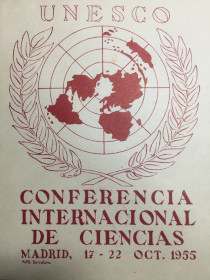
A puzzling marriage? UNESCO and the Madrid Festival of Science (1955), Clara Florensa i Agustí Nieto-Galan (eds), "Popular Science under Franco", History of Science (Febrer 2021).
Del 17 al 22 d'octubre de 1955, Madrid va acollir el Festival de la Ciència de la UNESCO. En els primers anys de la Guerra Freda, en un país dictatorial que havia estat recentment admès en la comunitat internacional, el festival tenia com a objectiu difondre la ciència entre el públic a través d'exhibicions d'instruments científics, conferències públiques, exhibicions de llibres, associacions professionals d'autors científics i debats sobre l'ús dels diferents mitjans. En aquest context, els visitants estrangers, molts dels quals procedien de democràcies liberals, semblaven còmodes en la capital d'un país governat per una dictadura que havia sobreviscut després de la derrota del feixisme a la Segona Guerra Mundial i lluitava per guanyar-se el reconeixement exterior després anys d'aïllament.
Aquest article analitza el paper polític de la divulgació científica al Madrid d'aquesta època. S'aproxima al matrimoni aparentment desconcertant entre l'agenda internacional de la UNESCO per a la pau i la democràcia i els interessos de les elits franquistes. Les visions compartides de la modernitat tecnocràtica, la lluita contra el comunisme i una diplomàcia al servei del nacionalisme espanyol van aplanar el camí per a l'aliança.
El Taxidermista de la plaça Reial és una crònica, escrita per Miquel Carandell, que recull la història del comerç singular que va obrir a finals del segle XIX a la Plaça Real, un relat explicat des d’una triple perspectiva, la històrica, l’emotiva de la mà de Núria Viladevall Palaus, besneta de Soler Pujol, i la construïda amb diferents testimonis.
A la vegada, la de la botiga és una història de ciència a la ciutat, una història que ens mostra la importància dels espais com les botigues pel desenvolupament científic, especialment, per generar espais de trobada i debat entre especialistes, professionals i no professionals. Alguns d’aquest últims van ser aficionats, col·leccionistes i artistes tant coneguts com Josep Maria de Segarra, Lluís Doménech i Torres (net de Doménech i Muntanter), Josep Pons Oliveras, Salvador Dalí, Gabriel Garcia Márquez, Pere Pruna, Jorge Wagensberg o els mateixos Joan Miró i Lluís Llach que s'aturaven davant els seus aparadors.
La idea de recopilar en un llibre la llarga història del “Museo Pedagógico de Ciencias Naturales” va sorgir de, Núria Viladevall Palaus, besneta de Lluís Soler Pujol, fundador de la botiga museu. El text rememora les meves vivències a partir de les olors que es generaven amb l’activitat de l’establiment. Aquest relat es complementa amb el text de Miquel Carandell, doctor en Història de la Ciència, que explica com Soler Pujol i els seus descendents van fer d’aquesta botiga singular un referent en el món de la taxidèrmia i, alhora, un espai de difusió de la història natural, de la ciència, un punt de trobada de col•leccionistes, científics, aficionats i curiosos. A més, el llibre que volem editar compta amb el testimoni de diverses persones que van conèixer l’establiment com l’escriptor i periodista Lluís Permanyer; el poeta i escriptor Vicenç Altaió; la directora de la Fundació SETBA, Cristina Sampere, Artur Ramon ; galerista d'art, entre d’altres.
https://www.verkami.com/projects/30317-el-taxidermista-de-la-placa-reial
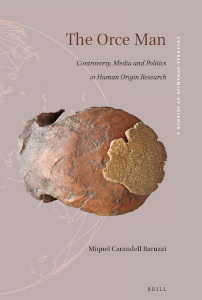
Miquel Carandell Baruzzi, professor associat a l’Institut d’Història de la Ciència, és l’autor del llibre The Orce Man: Controversy, Media and Politics in Human Origins Research que acaba de ser publicat per la prestigiosa editorial de recerca acadèmica Brill. El llibre, resultat de la tesi doctoral llegida a l’Institut l’any 2015 i dirigida per Oliver Hochadel, ens presenta la història de la controvèrsia de l’Home d’Orce.
Descobert l’any 1982 en el jaciment de Venta Micena a Orce, Granada, l’Home d’Orce és un petit fragment de crani que es va presentar públicament el maig de 1983 com una resta d’un avantpassat de l’ésser humà de vital importància. El fragment va ser considerat pels seus descobridors, Josep Gibert, Jordi Agustí i Salvador Moyà-Solà, investigadors de l’Institut Paleontològic de Sabadell, com l’homínid més antic d’Europa, “el Primer Europeu”. El descobriment va rebre una atenció mediàtica, política, i també científica, inusitada. Després d’un any, col·laboradors francesos dels investigadors catalans van començar a posar en dubte la validesa de la troballa. Aquests dubtes van passar a la premsa, on va esclatar una intensa controvèrsia que es va allargar durant gairebé trenta anys.
En aquest llibre, Carandell utilitza les eines, metodologia i historiografia de la història i la sociologia de la ciència per presentar una narrativa cronològica de la controvèrsia d’Orce, en algunes ocasions seguint el desenvolupament de la història gairebé dia a dia. Aquesta detallada atenció no pretén descobrir si el fragment anomenat “Home d’Orce” era efectivament una resta humana o no, sinó mostrar sota quines circumstàncies, sovint socials, polítiques o, fins i tot, personals, certes afirmacions científiques són creïbles i acceptades tant pels experts com pel públic general, i d’altres no ho són. Situant la història de la controvèrsia en el seu context històric, polític, social i científic, aquest llibre mostra com la línia que separa l’èxit científic del fracàs és molt més estreta del que podria semblar i està íntimament vinculada a la seva atenció política i percepció pública.

Les transformacions d’Aristòtil. Filosofia natural i medicina a Montpeller: el cas d’Arnau de Vilanova (c. 1240-1311). Premi de Filosofia Joaquim Carreras i Artau 2017 de l’Institut d’Estudis Catalans (Barcelona: Institut d’Estudis catalans, 2020)
Arnau de Vilanova (c. 1240-1311), un dels metges de més prestigi de l’edat mitjana llatina, és autor d'una extensa obra que va contribuir a definir la medicina com a ciència en el sentit escolàstic del terme. Utilitza els diversos gèneres de la literatura mèdica de l'època: el comentari a les autoritats mèdiques, el tractat teòric i de filosofia natural, els aforismes, la summa o compendi de medicina teòrica, el regiment de sanitat, la monografia especialitzada o el tractament específic adreçat a un pacient. La seva medicina s’inscriu dins el galenisme, que arriba a l’edat mitjana gràcies a les traduccions dels metges àrabs. En diverses de les seves obres, també hi constatem la influència d’Aristòtil. Els tractats de medicina teòrica inclouen un nombre major de referències a obres seves, ja que se serveixen de la filosofia natural aristotèlica per a desenvolupar diversos aspectes de la teoria mèdica. En aquest sentit, Arnau de Vilanova s’esforça a conjugar la filosofia natural aristotèlica amb la medicina i estableix les competències de cada una d’aquestes dues disciplines. Així, Arnau va definir la naturalesa de la disciplina mèdica i de la seva tasca com a coneixement, és a dir, com una ciència aristotèlica que procedia dels principis de les causes universals cap als efectes específics. Aquesta concepció va entrar en conflicte amb una altra manera d'entendre la medicina, més tècnica i pràctica, però amb el temps es acabar imposant. Aquest llibre analitza la influència d'Aristòtil en la medicina i la filosofia natural d’Arnau de Vilanova.
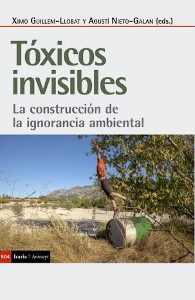
Tóxicos invisibles ens presenta un conjunt d'històries poc conegudes de contaminació ambiental al llarg de segle XX. Ens transporta a determinats llocs, indústries, regions, en què la connivència dels experts amb les administracions públiques i les empreses privades ha silenciat i invisibilitzat a les principals víctimes de la toxicitat: treballadors, activistes, ciutadans en general. A través d'un conjunt d'investigacions històriques rigoroses, el llibre mostra com en aquests conflictes ambientals s'activen sofisticats mecanismes de construcció de la ignorància que dificulten la correcta regulació de productes i la recuperació d'espais malalts, degradats de manera gairebé irreversible.
Tóxicos invisibles és una denúncia de les nostres societats industrials desregulades, complaents amb els riscos de milers de productes sintètics que envaeixen les nostres vides, i a el mateix temps una apel·lació a la responsabilitat de tots per millorar les nostres condicions de vida.
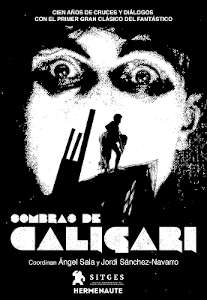
Coordinat per Ángel Sala i Jordi Sánchez-Navarro, la publicació compta amb la partició de Carlos Tabernero, membre del CEHIC i professor de la UAB.
El llibre s'edita per a celebrar el centenari de El gabinet del doctor Caligari, el primer gran clàssic del cinema fantàstic i de terror, i explora el seu immens llegat cinematogràfic i cultural. El lector trobarà mirades diverses a l'enorme influència dels assumptes, la posada en escena i els recursos narratius de la pel·lícula al cinema i la televisió posteriors, sense oblidar la gènesi de Caligari, el seu marc sociopolític i els debats suscitats per la seva interpretació al llarg de la història.
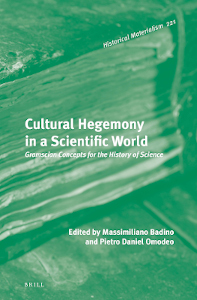
Massimiliano Badino and Pietro Daniel Omodeo (eds.), Cultural Hegemony in a Scientific World. Gramscian Concepts for the History of Science. Historical Materialism Book Series, Volume: 221, Brill, 2020.
Aquest volum és el resultat de la col·laboració internacional que diversos membres de l'IHC establiren després del congrés "Science as Cultural Henegomy: Gramscian Concepts for the History of Science", que tingué lloc a Barcelona, el 2014. El llibre analitza les diferents aplicacions de conceptes i categories desenvolupades pel pensandor italià Antonio Gramsci a l'estudi històric, sociològic, cutural de la ciència. Conceptes com hegemonia i subalternitat ens ajuden a comprendre la càrrega política del fet científic des d'una perspectiva crítica. Els capítols publicat pels membres de l'IHC són els següents:
Chapter 1 Past and Present: Revisiting ‘Gramscianism’
Autor: Agustí Nieto-Galan [pp. 19–38]
Chapter 8 Using Gramsci’s Dialogical Approach: The Struggle for Meaning in Q&A Sections of the Spanish Press in the First Third of the Twentieth Century
Autors: Isabel Jiménez-Lucena, Jorge Molero-Mesa, and Carlos Tabernero-Holgado [pp 203–242]
Chapter 12 Philanthropy, Mass Media, and Cultural Hegemony: The Rockefeller Foundation and the Politics of Science Popularisation in the 1930s
Autor: Jaume Sastre-Juan [pp. 297–318]
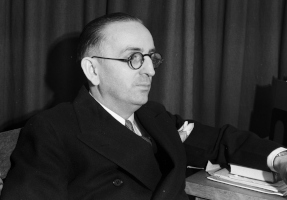
“Philanthropy, Mass Media and Cultural Hegemony: the Rockefeller Foundation and the Politics of Science Popularization in the 1930s”, en Badino, Massimiliano; Omodeo, Pietro Daniel (eds.), Cultural Hegemony in a Scientific World: Gramscian Concepts for the History of Science, Leiden, Brill, 297-318.
En 1938 i 1939, la Fundació Rockefeller va organitzar dues conferències secretes 'Sobre la interpretació de la ciència per a un públic en general', va encarregar un estudi exhaustiu de la divulgació científica contemporània als Estats Units i va participar activament en els esforços internacionals en aquest camp sota els auspicis de la Institut Internacional de Cooperació Intel·lectual de la Societat de Nacions amb seu a París. El capítol situa l'interès de la Fundació Rockefeller per la divulgació científica a la intersecció de dos dels seus principals preocupacions a finals de la dècada de 1930, que van anar a el mateix temps dos elements clau en la lluita per l'hegemonia cultural a Estats Units: la ciència i les comunicacions de masses. Sosté que un enfocament gramscià, que entén la popularització de la ciència com una eina en la lluita per l'hegemonia cultural, ens permet donar sentit a l'interès de la Fundació Rockefeller a la divulgació de la ciència a la fi dels anys trenta.
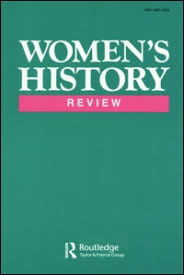
"The historical understanding of female premodern possessions. Problematizing some gender assumptions in the historiography on Teresa de Ávila and Jeanne des Anges", Women's History Review, 29:1, 2020, 125-141.
Aquest article analitza com abordar la història de les possessions femenines en l'actualitat. A l'analitzar algunes contribucions recents aplicades a dues figures històriques conegudes: Teresa d'Àvila (1515-1582) i Jeanne des Anges (1602-1665), problematizaré la historiografia en curs sobre les possessions femenines. Concretament, em proposo reflexionar sobre dos dels marcs conceptuals actuals que caracteritzen la forma en què la història explica l'experiència subjectiva d'aquests individus premoderns posseïts. Em centre en dos tipus d'interpretació: a una l'anomeno interpretació "neuròtica" i a l'altra la interpretació "subversiva". Les dues construccions sustenten les explicacions de les possessions divines i demoníaques de les dones, que involucren prejudicis historiogràfics de gènere i suposicions ahistòriques.
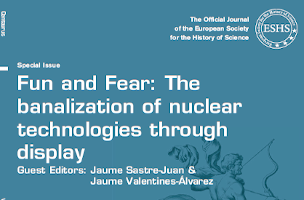
Com s’aconsegueix que les tecnologies nuclears esdevinguin part de la quotidianitat? Com s’han dibuixat i re-dibuixat al llarg dels últims setanta anys les fronteres entre allò excepcional i allò banal en relació a les tecnologies nuclears?
Aquestes són algunes de les preguntes que es planteja ‘Fun and Fear: The Banalization of Nuclear Technologies through Display’, un número especial co-editat pel membre del CEHIC Jaume Sastre-Juan que ha estat publicat recentment a la revista Centaurus.
La traducción de las Obras completas de Freud por Luis López Ballesteros en 1922 colocó las ideas freudianas en el punto de mira de los especialistas españoles. Sobre la resistencia y el rechazo con las que fueron recibidas existen numerosos estudios, y precisamente Psicoanálisis y defensa social en España, 1923-1959 viene a completar esta visión. Muestra la otra cara: a través de las distintas dimensiones de la vida del individuo y de la sociedad a las que se aplicó el psicoanálisis, da cuenta del éxito de su expansión, de las reinterpretaciones y reapropiaciones que se dieron entre los años veinte del pasado siglo y en la dictadura franquista. Silvia Lévy Lazcano presenta en esta obra un riguroso discurso que acompaña a iniciados y recién llegados en el conocimiento de autores y de su acercamiento, por medio del psicoanálisis, a la enfermedad mental, a la psique, al comportamiento y las relaciones humanas, a la sexualidad, a las identidades de género y, en general, a los engranajes de la subjetividad moderna.
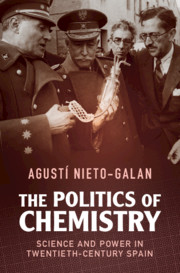
Agustí Nieto-Galan sosté que la química del segle XX va ser profundament política. Lluny d'existir en una esfera pública diferent, per a l'autor el coneixement químic es va aplicar de tal manera que va crear forts vincles amb projectes industrials i militars, i va generar rivalitats nacionals i esforços internacionals, alhora que va donar forma a les condicions de vida de milions de ciutadans. És en aquest marc general en el qual Nieto-Galan analitza com els químics espanyols es van convertir en poderosos agents ideològics en diferents contextos polítics del segle XX -des de règims liberals fins a dictadures-, i revela la seva influència en les xarxes científiques internacionals i la seva contribució en les feroces batalles ideològiques pròpies d'aquesta era d'extrems. Així, l'autor argumenta que els discursos compartits entre la química i el liberalisme sobre la guerra, el totalitarisme, la religió i la diplomàcia, van conduir a avanços en tots dos camps.
The Dark Side of Molecules: Politics and Chemistry in the 20th century

“‘If You Tilt This Game, Will It Explode?’: The Politics of Nuclear Display at the New York Hall of Science, 1966-1973’”, Centaurus, 61(1), 2019, 33-50.
Aquest article analitza la política del New York Hall of Science de Nova York des de finals de la dècada dels anys 60 a principis dels anys 70. L'Hall of Science, que va tenir els seus orígens a la New York World 's Fair de 1964-65, va comptar amb exhibicions atòmiques pràctiques per a nens i va projectar la creació d'un important Nuclear Science Center amb el ple suport de la Comissió d'Energia Atòmica. Aquest Nuclear Science Center hauria estat la major mostra permanent sobre ciència i tecnologia nuclear als Estats Units i hauria inclòs l'Atomarium com la peça més espectacular de l'exhibició. En l'Atomarium, els visitants haurien pogut veure com un reactor nuclear en funcionament es tornava crític des d'un teatre circular en forma d'espiral, mentre que, mitjançant una finestra transparent de plexiglàs situada just a sobre de l'nucli, un guia dissertava sobre els usos pacífics d'energia atòmica. Aquest article analitza l'Hall of Science com un espai en el qual es van desenvolupar les tensions entre el excepcionalisme nuclear i la banalització nuclear. En particular, l'article explora com es pretenia que els sistemes d'exhibició lúdics i immersius exercissin un paper polític en la modulació de la por nuclear en un període en què la promoció d'una indústria privada d'energia nuclear per part de la Comissió d'Energia Atòmica va haver de fer front a creixents resistències davant la posivilidad de desenvolupament de plantes d'energia nuclear.
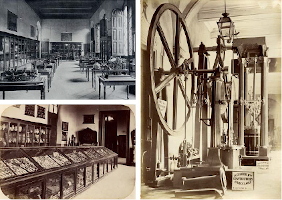
“The Failed Technology Museum of Catalonia: Engineers and the Politics of the Musealization of Technology in Barcelona (1929-1939)”, Nuncius, 34(1),2019, 128-154.
Al març de 1937, per ordre governamental es creava el Museu Tecnològic de Catalunya, tot i que mai va arribar a materialitzar-se. Per què es va percebre un museu nacional de tecnologia com una necessitat urgent en plena Guerra Civil espanyola? Aquest article explora com aquest intent fallit va tenir les seves arrels en l'interès polític de llarga durada de la comunitat d'enginyers per la musealització de la tecnologia a Barcelona. D'una banda, analitza la tradició del desplegament tecnològic orientat a incrementar la productivitat industrial i millorar l'educació tècnica. D'altra banda, estudia els esforços tecno-nacionalistes dels enginyers per construir un passat tecnològic respectable per a la nació. Finalment, explora com aquests dos elements s'haurien articulat al Museu de la Tecnologia de Catalunya en bona mesura gràcies a el paper clau que van jugar els professionals de l'enginyeria durant la Guerra Civil espanyola.
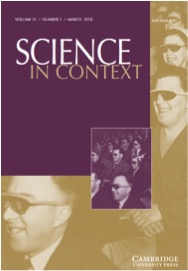
"The changing nature of modernization discourses in documentary films". Science in Context, 2018, 31(1): 61-83.
El règim feixista de Franco a Espanya (1939-1975) ofereix la possibilitat d'explorar la complexa relació entre les pràctiques de comunicació mediàtica i els processos de producció, circulació i gestió de coneixement. El règim va utilitzar persistentment el cinema, i més tard la televisió, com a dispositius d'adoctrinament i disciplina. Per tant, aquests mitjans van servir per donar forma a la representació el règim, que es va basar en gran mesura en la generació d'actituds positives d'adhesió als governants a través de la submissió i l'obediència de la vila als experts. Aquest article examina la naturalesa canviant dels discursos i pràctiques de la modernització, com a element fonamental de les estratègies de propaganda de règim, i com es retrata en els documentals produïts sota el seu govern. La retòrica de la modernització va involucrar un model explícit i deficitari de gestió del coneixement, que pretenia legitimar les accions i polítiques del règim en les seves primeres dècades, com veurem pel que fa als documentals metges colonials produïts per al noticiari oficial de la dècada dels quaranta . No obstant això, l'enfocament d'aquesta retòrica, malgrat els seus objectius polítics perdurables, va haver d'obrir-se d'alguna manera a mesura que canviava la relació entre experts i no experts, tant en termes epistemològics com pràctics, com en els documentals sobre la vida silvestre produïts per a televisió en la dècada de 1970, l'última dècada el règim.

